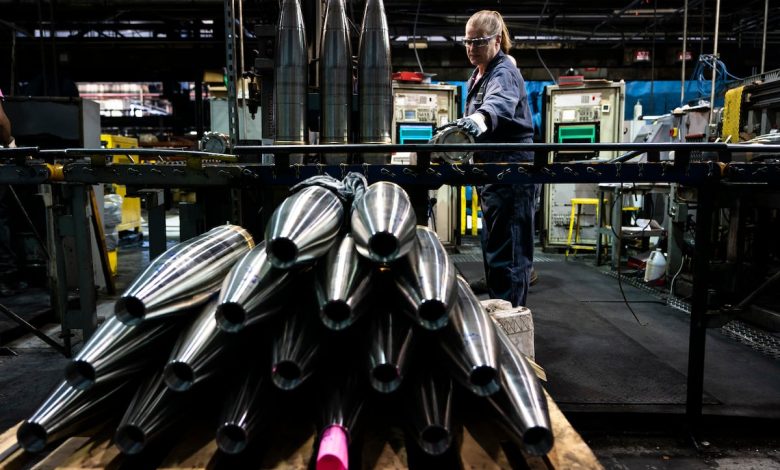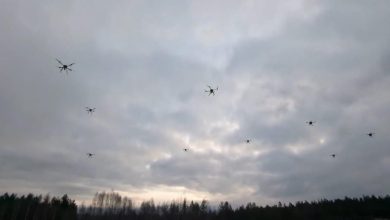The US defense industrial base needs a revamp for speed and scale

One of the most pressing national security issues facing the incoming Trump administration is the resilience of our defense industrial base. The United States has the most lethal and capable fighting force in the world. However, recent experiences have demonstrated profound difficulties in our industrial base. Unless we get our defense industrial base on a war footing now, we face potentially catastrophic consequences should the balloon go up — to use a phrase first popularized in World War I to signify the imminent start of conflict — in East Asia or elsewhere.
Repeated war games have demonstrated that our munitions stocks will be decimated within a couple weeks in the event of major conflict. Significant production challenges supplying precision guided missiles to Ukrainian forces have underscored our inability to rapidly replenish weapons and major systems. While significant resources and attention have been focused on addressing these shortcomings recently, past mobilizations demonstrate that we are not doing enough. To deter our potential adversaries, we recommend three major actions that should be pursued in the coming term.
1. Speed. Despite a decade’s focus on innovating with commercial technology and using faster contract vehicles, the defense acquisition system largely remains focused on developing exquisite systems that take much too long to deliver. The Navy, for example, selected the “mature design” of the Italian shipbuilder Fincantieri Maritime Marine for its future frigate program back in 2020. One of the major reasons for its selection was the variant built for the U.S. Navy in a Wisconsin shipyard would have 85% commonality with existing models already in service in numerous foreign navies. Design alterations made by Navy engineers, however, dramatically reduced the commonality to 20% and added 3 years to construction timelines.
We need to turbocharge our efforts to change how we design and acquire capabilities. This starts with simplifying requirements to harness leading commercial solutions, rapidly iterating technologies, and delivering capabilities at speed. We also have to design systems for production, such as the Air Force is doing in its Enterprise Test Vehicle effort.
While more resources will help increase speed to a degree, DoD needs to work with Congress to transform the budget structure to increase flexibility in budgetary execution as the Congressional Commission on PPBE Reform outlined earlier this year. Additionally, our forces have gotten the prototyping game down, but we need to dramatically increase the use of follow-on production, “Other Transaction” contracts to rapidly transition prototypes to the battlefield.
2. Scale. Our industrial base can produce at the scale needed to succeed, but only if we change how we do business. For example, DoD went from the drop of the request for proposals to having over 16,000 Mine-Resistant Ambush-Protected vehicles roll off the assembly line within three years during the wars in Iraq and Afghanistan. Delivering life-saving capabilities at this speed and scale required tremendous leadership, simplified requirements, utilizing existing designs, and multi-sourcing.
Similar efforts are needed now across munitions, unmanned systems, and selected major systems critical to future contingencies. We need to build more production flexibility into contracts by establishing surge-related line items to reduce the time required to ramp production. Second sourcing and multi-sourcing can also be beneficial as shown with last year’s 155mm ammunition awards to nine companies, including three based outside of the United States. Creating more financing options like the Office of Strategic Capital and accelerating depreciation could also help attract private sector capital investment to scale production.
Another way to increase mass and scale capabilities in theater is to maximize the use of unmanned and attritable systems. The focus on unmanned and autonomous systems to increase fielded capacity has grown significantly in the past few years, but the fact is that we need vast numbers of attritable systems to meet near-term threats. This priority of scale cannot become victim to efforts focused on exquisite systems.
3. Sustain. Our sustainment challenges, from contested logistics and supply chains to sustaining forces at great distance, are probably the hardest facing us and unfortunately have the least developed solutions. AUKUS programs and the recent Regional Sustainment Framework are beginning to address this challenges, but sustainment requires much more attention and resources to ensure the resilience of our deployed forces and systems.
In all these actions, the partnership between government and industry will be critical. Fortunately, our existing authorities such as the Defense Production Act are strong and can be used now to create a modern-day War Production Board to facilitate that close collaboration.
Our experience with Ukraine, Israel and beyond has also made it crystal clear that the United States cannot do it all. We need a larger industrial base, involving our closest allies with whom we go to war, with robust international industrial partnerships that build the systems needed for current and future contingencies.
Unfortunately, time is not on our side. If the Davidson window is correct, we have two years.
The incoming administration and Congress, in partnership with industry and our close allies, must harness innovation, manufacturing capacity, and other means to unleash the true strength of our military and our defense industrial base to deter our adversaries in today’s very dangerous world. The time to do this is now, before the balloon goes up.
Jerry McGinn is the Executive Director of the Greg and Camille Baroni Center for Government Contracting in George Mason University’s Costello College of Business and the author of Before the Balloon Goes Up: Mobilizing the Defense Industrial Base Now to Prepare for Future Conflict.
Read the full article here






